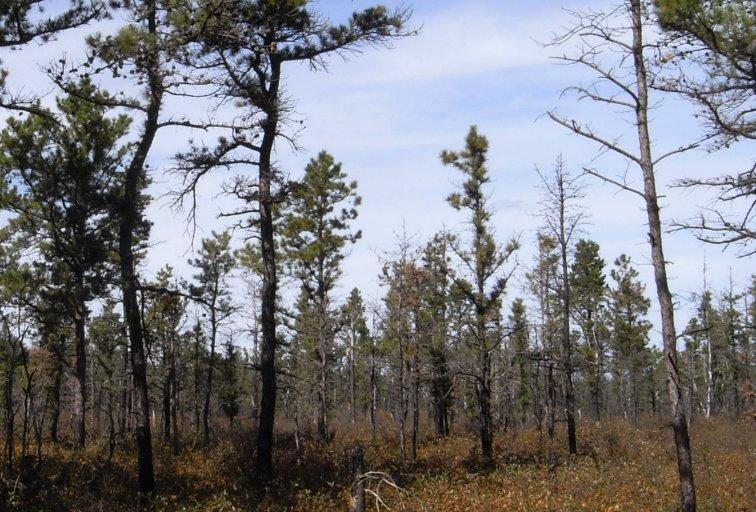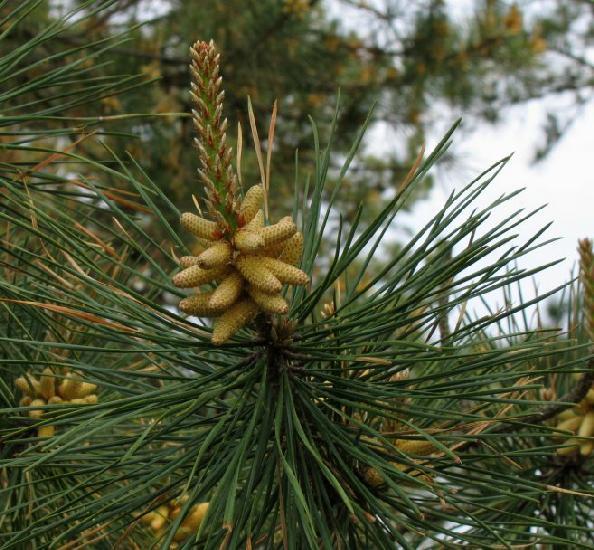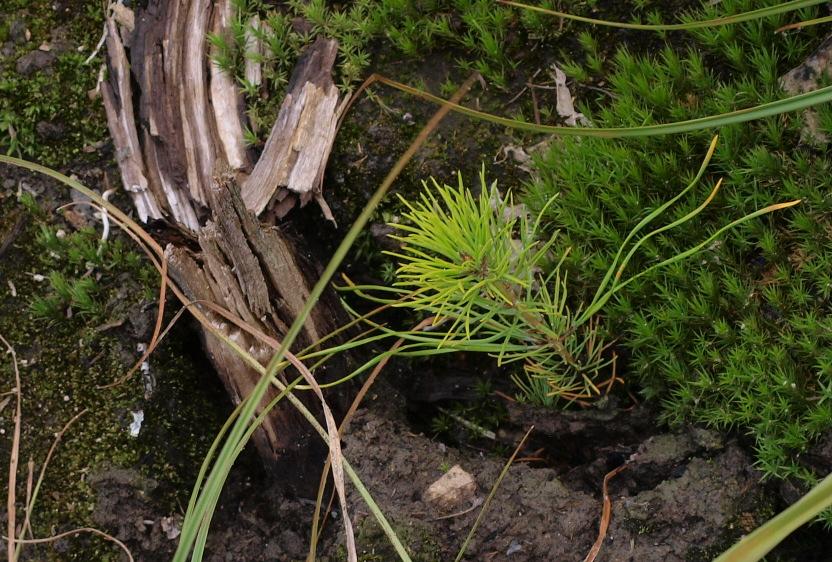Pitch Pine
Pinus rigida
Pitch pine is the signature tree of southeastern Massachusetts, the one forming the pine barrens, a globally rare ecosystem
whose components are adapted to frequent fires. These pines grow to only 50-60 ft—not nearly as tall and straight as white
pines, typically with abundant cones in the crown. The bark of mature trees consists of massive reddish- or yellowish-brown
plates separated with cracks. The thick bark protects reserve buds that quickly replenish the crown if it is damaged in a
fire. Pitch pine needles are bundled together in threes. They are dark green, rather long, stout, stiff, and twisted, contrasting
with soft and delicate, bluish-green foliage of white pines. Masses of pollen produced by pines in May create a yellow skim
on the surface of the ponds, house roofs, roads, and cars. The abundant pine pollen helps discern and analyze annual sediment
layers at pond bottoms. Cones of pitch pine measure a couple inches long and 2/3 as wide. Each cone scale is fortified with
a prickle so sharp that fresh cones are difficult to handle.

Pitch pines regrowing their crowns after a fire, Myles Standish SF, Plymouth

Pollen cones, Myles Standish SF, Plymouth, May 23

A pitch pine seedling in the drained impoundment, Tidmarsh Sanctuary, Plymouth, October 15

Pitch pines, Tidmarsh Sanctuary, Plymouth, October 22